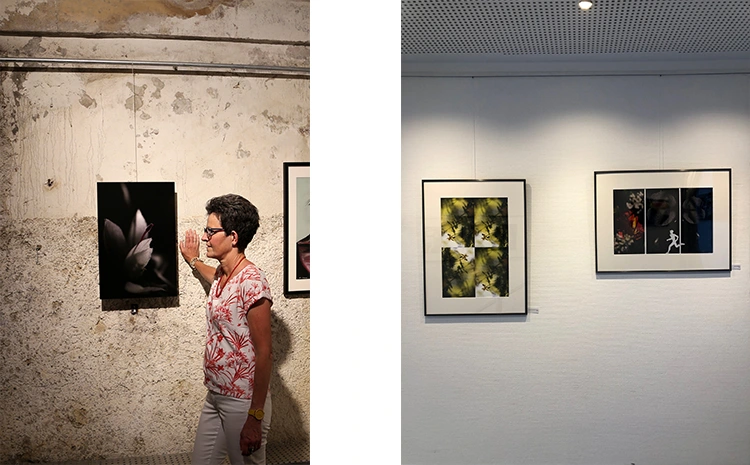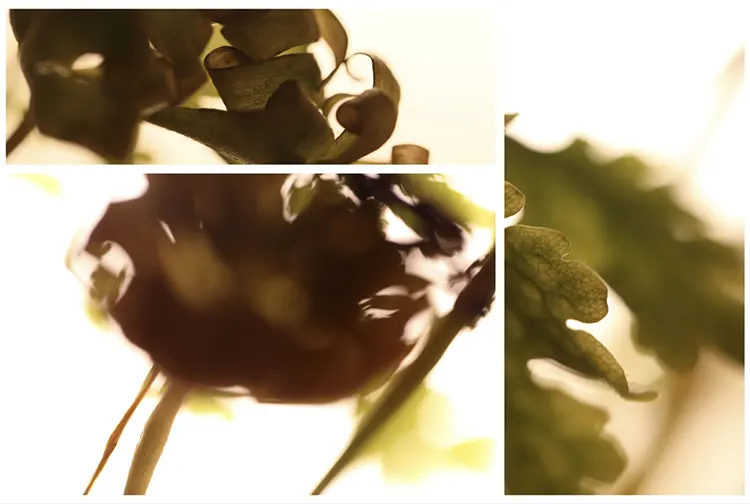“Photography is my artistic expression and passion. Especially macro photography.”
The Discovery of a Passion: Ute Eiselt’s Early Encounters with Art
Ute Eiselt was already enthusiastic about photography in her childhood and saw herself as a creative force in the field of children’s book illustration. The artist’s first major investment was a single-lens reflex camera, a symbol of her commitment that equaled an entire month’s income.
Growing up surrounded by a jewelry designer, a restorer, and art lovers, Eiselt’s fascination and inquisitiveness for artistic pursuits has grown steadily.
These family influences seamlessly integrated creativity into her own being, creating a unique lens through which she perceived her world.
Eiselt began her career working with young people and consistently used photography to document her educational work. The deciding factor was her quest for transparency and clarity.
In 2013, she experienced a defining moment when she happened upon a large-scale painting that depicted nature in a public space in a way she had never seen before. Curious, Eiselt sought to understand the creator’s perspective and decided to present her own work publicly. This led to encouraging feedback and purchases, provided inspiration for her journey in the art industry.

Ute Eiselt: The Rise of the Artistic Journey
After 2013, Eiselt’s artistic work found recognition in numerous solo and collaborative exhibitions, both nationally and internationally. Her work graces the pages of art catalogs, books and magazines throughout Europe and the United States.
Beginning in 2021, private art lessons with Helmut Vakily in Munich increased the quality and expressiveness of her artwork and likewise Eiselt’s artistic output.

Designing Visual Narratives: Ute Eiselt’s Methodology and Inspirations
Ute Eiselt devotes herself to her outdoor surroundings at specific times of day to capture the nuanced details of nature, armed with her camera and a macro lens. Her technique revolves around the manipulation of focus and blur, foregoing tripods or other aids. The captured images are then edited on a PC to create new expressions and effects. Eiselt’s process often involves combining images and inserting characters, creating a complex narrative dimension. For such transformative efforts, the artist needs an environment free of distractions to allow for undivided attention to her work. In this way, images are created in Eiselt’s mind that later flow into her works, where they take on new power.
Eiselt’s oeuvre is inspired by important photographic figures such as Karl Bloßfeldt, his depiction of structures in the world of plants. Likewise by Henri Cartier-Bresson, whose impressive use of “leading lines for the eye” in his photography is fascinating. The contributions of these artists shape the narrative levels in Eiselt’s work.

Beyond the Lens: The Meaning and Aspirations of Ute Eiselt’s Art
One of her works titled “The Sound of the View” has a distinct introspective quality, prompting reflection on one’s own perceptions amidst the daily flood of news and information. While this triptych primarily depicts plant segments, it also encourages viewers to reconsider their interpretive glasses shaped by personal experience.
For Eiselt, who originally experimented with watercolor painting, photography is the perfect medium. She appreciates photography’s ability to capture and articulate reality through its distinctive perspective.
Eiselt’s dream project is a testament to her ambitious vision:
An exhibition of large-scale artworks that she creates in collaboration with other artists. She envisions a sound artist translating the visual essence of her works into auditory experiences, accompanied by a wood sculptor contributing complementary sculptures. This planned convergence aims to create a cohesive experience that is visual, auditory and tactile in its resonance.






